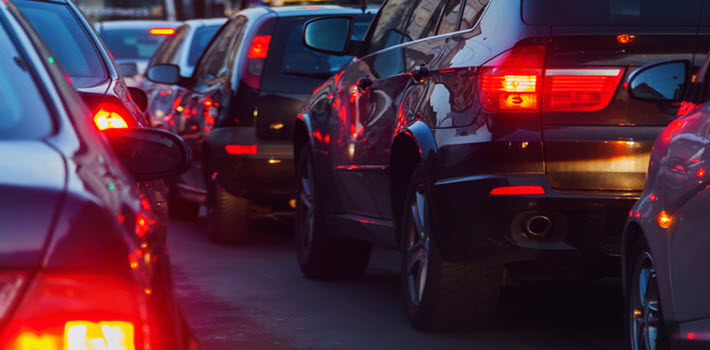Have you ever been driving your car, at fast and slow speeds, and noticed that when you start to push on your brakes there seems to be a loud squeaking or squealing sound? This is actually a more common issue than you would think. Especially if you have been driving with your brakes slightly pressed, one instance is how you might drive in a parking lot or when backing out of someplace. This can also be an indicator of other issues with your car’s brake system. Your car’s brake systems are crucial to your safety and the safety of others on the road so the maintenance of brakes is incredibly important, as there can be lives at risk.
-
- Many people will note that they may hear this squeaking when pressing on their brakes while driving 20mph or slower. People will also note that they won’t hear this sound if they are braking harder as opposed to almost “cruising” while pushing on the brake pedal lightly. There are a few things that could cause this squeaking, however there are more common ailments to your car if these symptoms occur. Among these are the front rotors being warped, hot spots – which are smaller irregularities on your rotors that are caused by excessive heat – and brake pad impressions. If you really don’t drive your car often, or if when you aren’t driving, your car is parked outside or uncovered, the moisture that is caused by rain or from living in humid areas can actually cause rust to build up on the rotors, except for the surface on which the brake pads rest. The uneven surface that is caused by this is called a pad impression and can actually cause your brakes to pulsate, regardless of speed. You can have your rotors resurfaced if they are thick enough, otherwise would need to be replaced. This wear can be accelerated by the hot spots on the rotors. Some of the excessive heat that causes these can actually occur if you drive your car and have the brake slightly pressed at the same time.
- By driving with your brake pedal slightly pressed, it can put a tremendous strain on your entire car. This can be caused even by just resting your left foot on the brake pedal. One huge and costly downside to driving this way is the fact that it will deplete your gas quicker and significantly decrease your gas mileage. You are not only using your gas to accelerate your car and drive as your normally would but now your car is working overtime to compensate for the fact that it has the brakes working against it to get it to the speed you want it to be at.
- Using your engine in this way can also put an incredible strain on your car. It could even cause it to overheat, depending on the severity of how you drive and brake at the same time and for how long as well as a few other external factors.
- Driving in this way can also severely impact your car’s brake systems. Your brake pads are not made for the use of being used while also cruising down the highway. Your brake pads and brake fluids will be used and worn down quicker than if the vehicle was driven correctly.

- Braking with your left foot, as is the only way you’d brake if you’re driving while simultaneously pressing on the brake, can be quite dangerous. There have been tests done, specifically by driver’s education instructors to show new drivers the difference in reaction and stop time when braking with the left foot, as opposed to braking with the right. The stopping distance was hugely improved when a driver switched to braking using their right foot instead of using their left. A huge portion of this comes from the left foot being able to counter balance the weight transfer that occurs when moving your right foot. By also keeping one’s left foot by the car’s wall, where there is usually a space to rest one’s foot, there is a significant difference in how hard a person can slam on their breaks in the case of an emergency. This quick and short stopping distance could be the difference between a close call and a fender bender, if not something worse.

